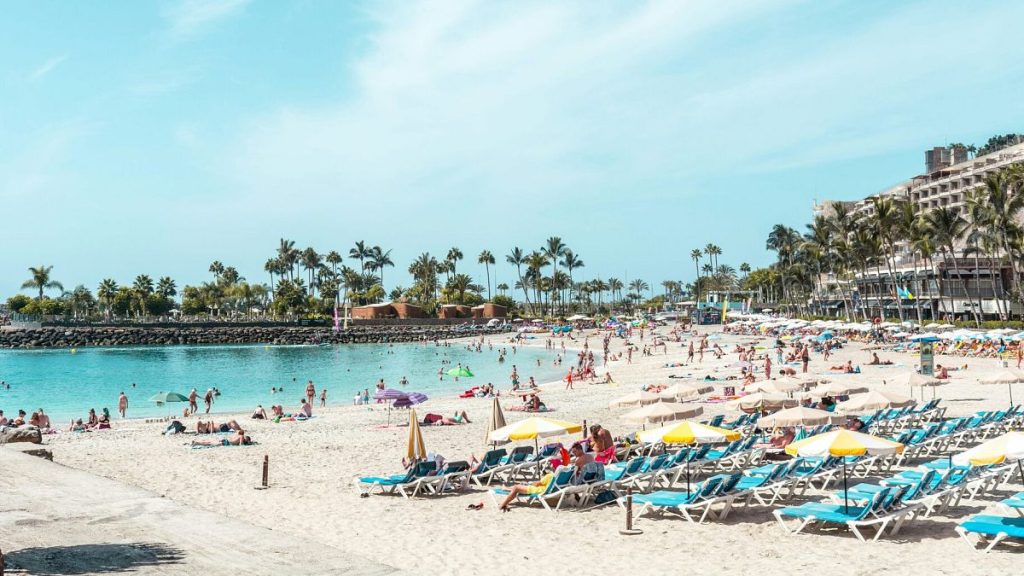Spain’s Tourism Renaissance: Breaking Records in a Changing Landscape
Spain is experiencing an unprecedented tourism boom that shows no signs of slowing down. The National Institute of Statistics recently reported a staggering 11 million international visitors in July alone—the highest monthly total in the country’s history. By the first seven months of 2024, Spain had already welcomed 55.5 million foreign travelers, putting it on track for its most successful tourism year ever. This remarkable growth isn’t just about visitor numbers; spending has surged to over €76 billion so far this year, representing a 7.2% increase compared to 2023. While the growth rate may be moderating slightly, with July’s numbers up by a more modest 1.6%, Spain’s position as a premier holiday destination remains unshakeable. British, French, and German travelers continue to form the backbone of this tourism renaissance, but the pattern of when people visit is undergoing a significant transformation, with traditional summer months no longer being the only peak season.
The concept of “shoulder season” is rapidly disappearing in Spain, particularly in September, which was once considered a quieter, more affordable time to visit. Travel habits have fundamentally shifted, both among locals and international visitors. Fewer than 40% of Spanish travelers now take their holidays in August, the traditional vacation month. Instead, approximately one in six Spaniards now plan their getaways for September, according to the National Observatory of Outbound Tourism. International visitors are following suit, keeping beaches, restaurants, and accommodations bustling well beyond the traditional summer peak. This extended high season is reflected in accommodation prices—the Canary Islands, often considered a barometer for Spanish tourism trends, saw a 5.3% price increase between September 2023 and 2024, with rates now approximately 25% higher than pre-pandemic levels in 2019. Across the country, a night’s stay averaged €132 last September, representing a remarkable 21% jump from the previous year. The days of September bargains in Spain may be becoming a thing of the past.
Today’s visitors to Spain aren’t just coming in greater numbers—they’re spending more lavishly during their stays. The average international tourist now spends approximately €1,490 during their visit, which translates to about €210 per day for a typical week-long trip. In July alone, foreign visitors collectively spent nearly €16.5 billion in the country, injecting substantial funds into the Spanish economy. This spending boom extends beyond traditional tourist areas, benefiting local businesses throughout the country. Restaurants report fuller reservation books, specialty shops see increased sales, and cultural attractions welcome more visitors. Even as prices rise, travelers appear willing to pay a premium for the Spanish experience, whether that means savoring authentic paella at a beachside restaurant, enjoying world-class museums in Madrid, or exploring the architectural wonders of Barcelona. This willingness to spend more reflects both the enduring appeal of Spanish culture and the evolving nature of tourism, where experiences often take precedence over cost concerns.
What makes Spain’s tourism boom particularly remarkable is that it persists despite significant headwinds, including growing anti-tourism sentiment and environmental challenges. In the Canary Islands, residents have taken to the streets to protest housing shortages and environmental degradation they attribute to mass tourism. These demonstrations highlight the complex social impacts of tourism’s success, particularly regarding affordable housing for locals and strain on natural resources. Major cities like Barcelona have implemented measures to manage tourism’s impact, including restrictions on short-term rentals and redesigning visitor experiences at popular attractions to reduce congestion. Meanwhile, parts of Spain face increasing climate-related challenges, with wildfire risks growing in tourist hotspots like the Canary Islands. Yet neither local resistance nor environmental concerns have meaningfully slowed the influx of visitors. This raises important questions about sustainability and whether Spain can maintain this growth trajectory without addressing these underlying tensions.
Despite higher prices and social concerns, September in Spain continues to attract visitors seeking a more relaxed experience without sacrificing Mediterranean charm. The appeal is straightforward: children have returned to school, reducing family crowds; temperatures remain pleasantly warm without the scorching heat of July and August; and the Mediterranean and Canary Island waters still invite swimmers with comfortable temperatures. Many travelers find this combination irresistible—warm days perfect for exploring historic sites or relaxing on less crowded beaches, followed by comfortable evenings dining outdoors under starlit skies. The seasonal rhythm of Spanish life also returns to normal in September, offering visitors a more authentic glimpse of local culture away from the peak tourist crush. Festivals and cultural events still abound, from wine harvests in La Rioja to local celebrations throughout the country, providing enriching experiences for those seeking more than just sun and sand.
For budget-conscious travelers, there are still ways to experience September in Spain without breaking the bank, though careful planning is increasingly essential. Data from travel search engine Kayak reveals that airfares from the UK to several Spanish destinations have actually decreased compared to 2023, particularly for flights to smaller coastal airports. Six of the ten destinations showing the largest year-on-year price drops are in Spain, led by Puerto del Rosario in the Canary Islands, where round-trip economy fares from the UK have fallen by 26% to approximately €225. Savvy travelers can combine these airfare savings with accommodations slightly away from prime tourist areas, dining where locals eat, and exploring free cultural attractions to create a more affordable experience. However, even with strategic planning, the overall cost of a Spanish holiday has undeniably increased, and September no longer offers the dramatic bargains it once did. This evolution reflects Spain’s transformation from a budget destination to a premium experience—one that millions of visitors still find worth every euro, even as they adapt to a changing tourism landscape that increasingly blurs the lines between high and low seasons.


